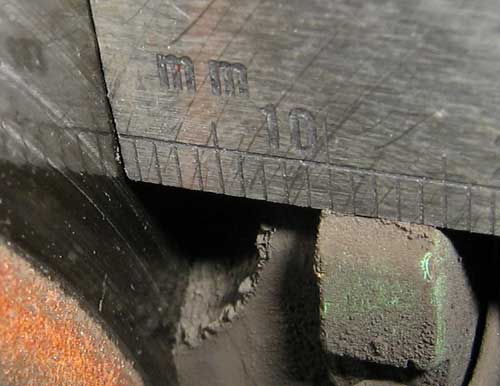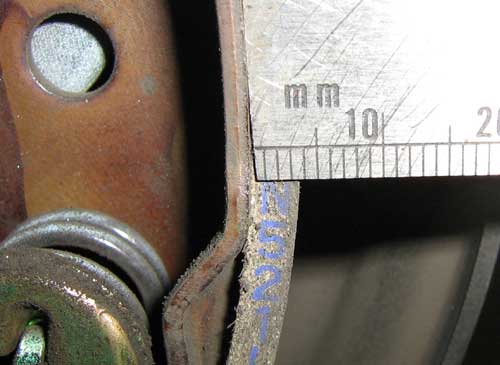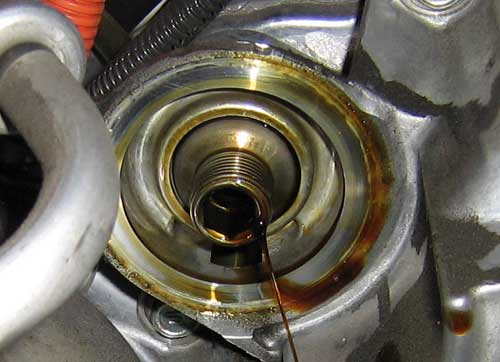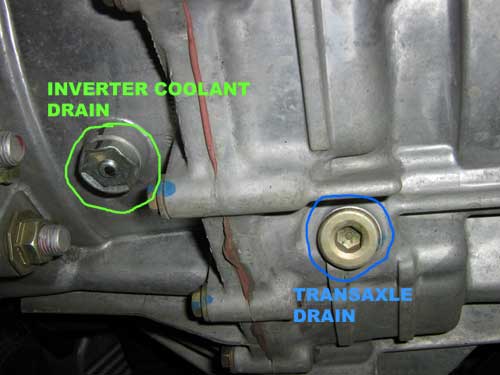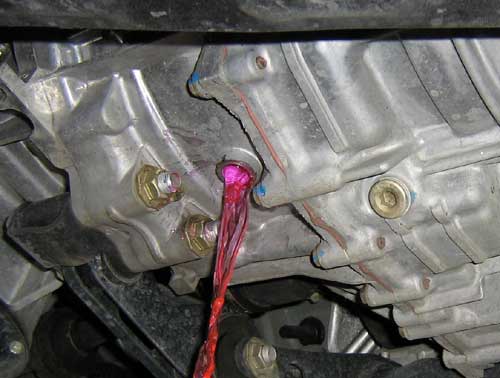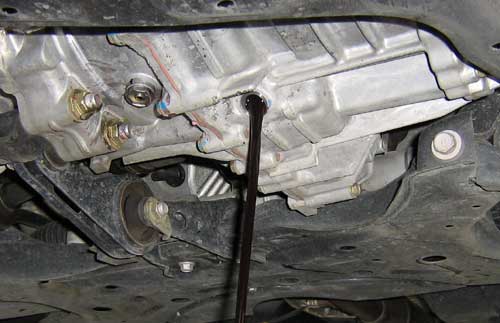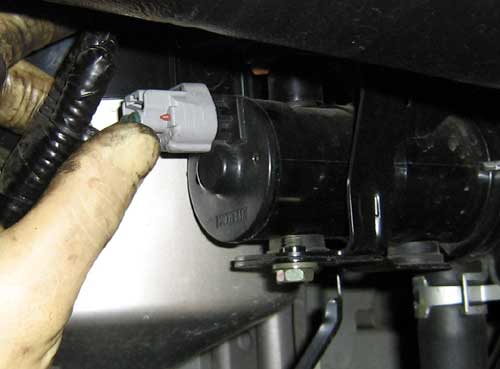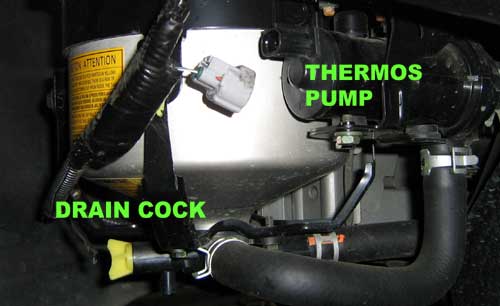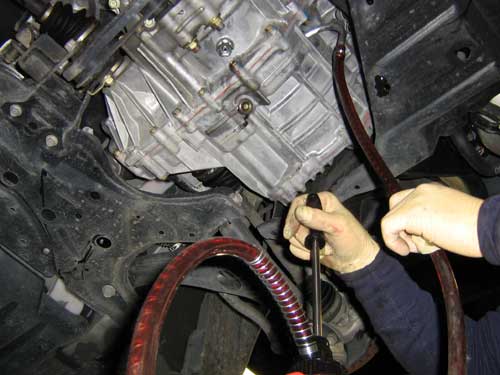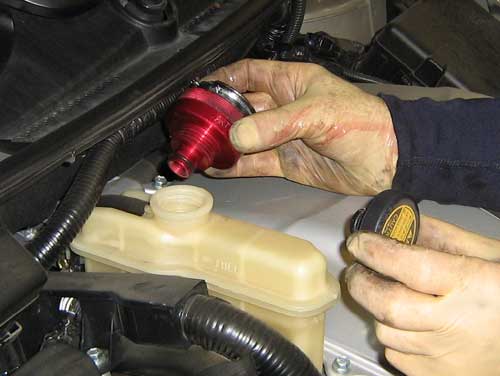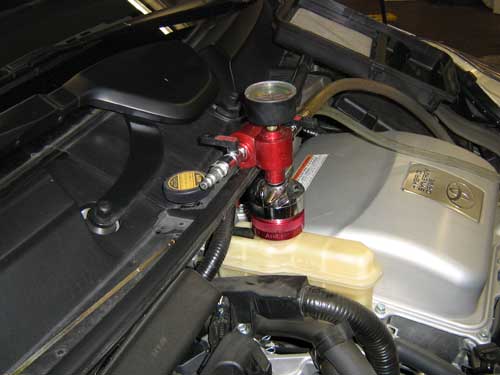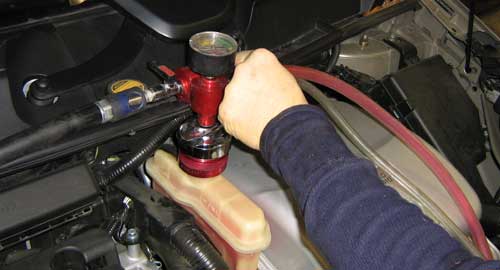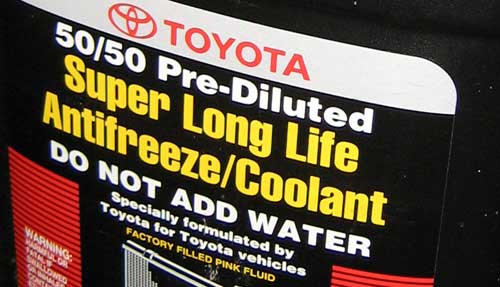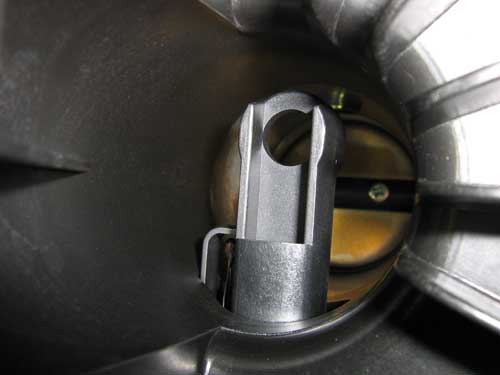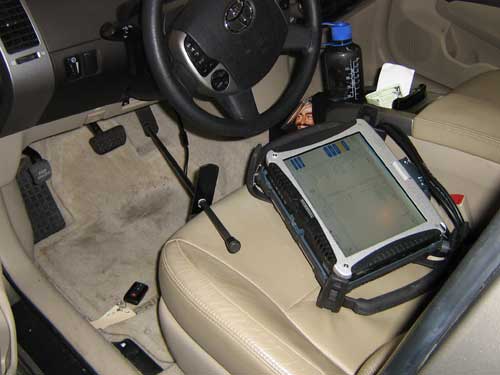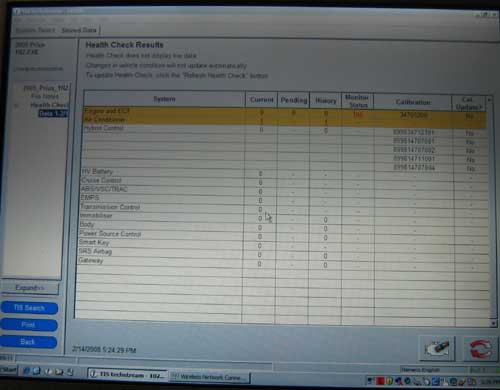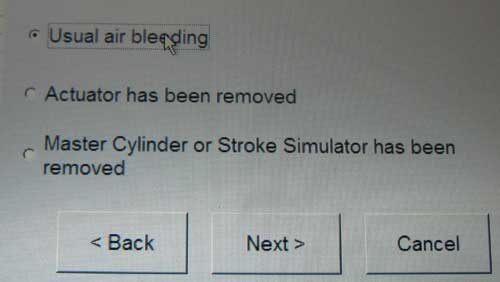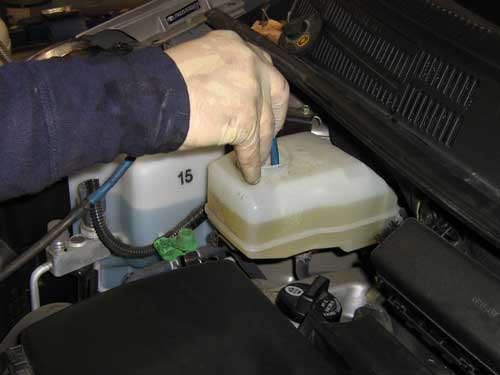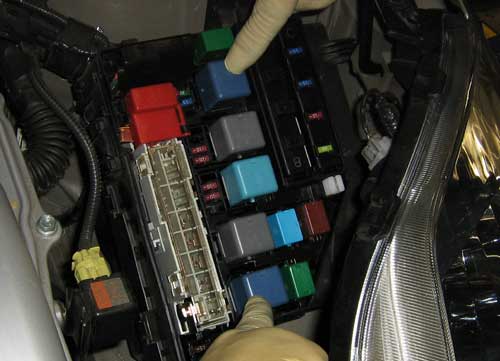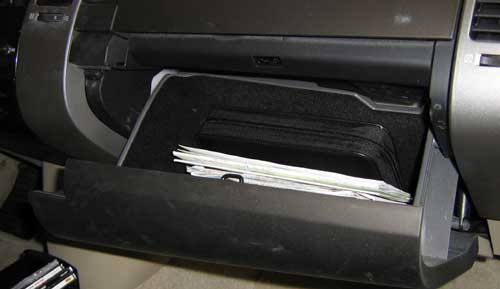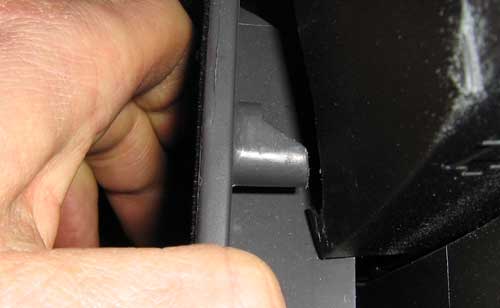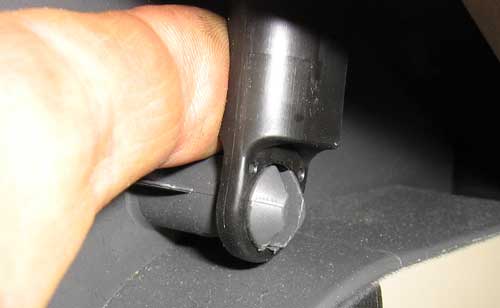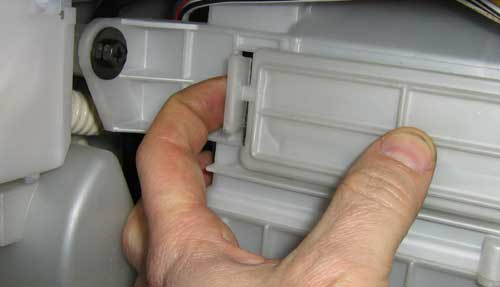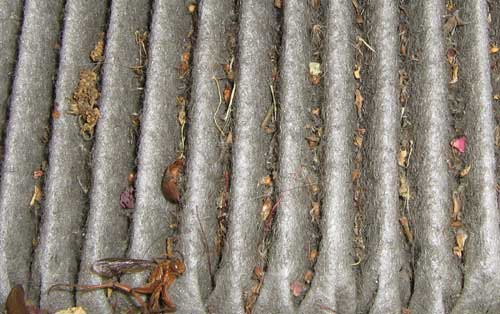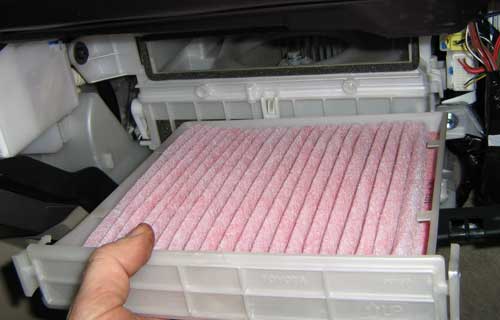Update 2022: This Prius 30K service article was written in 2006 or 2007, over 15 years ago. Someone recently pointed out that we recommend replacing the coolant every 30,000 miles in this article, which isn’t our recommendation these days. Toyota Super Long-Life Coolant (SLLC) was introduced in 2004, replacing Toyota’s Long-Life Coolant (LLC). Before these new coolants were developed, coolant did need to be replaced every 30K to prevent engine damage. Back then we didn’t know that the new coolant would actually protect the engine for up to 150K miles. We made our recommendation based on years of experience, and at the time we thought we were doing the right thing for our customers. We didn’t know that the new coolants were more than marketing hype until the “experiment” was over. Some people followed our recommendation, and some didn’t. Both groups didn’t have coolant related engine damage. Now that we know, we recommend replacing Toyota SLLC at 100K at then every 50K thereafter.
Sometimes we over-recommend based on past experience. Sometimes the manufacturer under-recommends based on engineering predictions. The point is that there are many examples where we were right and they were wrong, and vice versa. So, can you count on us always being right? No. However, you can count on us having your best interest at heart. And as always, no pressure. It’s your car, and we’re happy to service it in any way you see fit. Now on to the old article.
The 2004-2009 Prius 30K service is a pretty small service if you only do the items listed in the Scheduled Maintenance Guide. It’s just some inspections, tire rotation (without balance), air filter, cabin filter, and an oil change & filter. A truly tiny 30K!
We feel that your Prius will last a lot longer if you do more than the skimpy service in the maintenance guide. We recommend that you replace the WS transaxle fluid, inverter coolant, ICE coolant, and flush the brake fluid in addition to the standard items. It also might be a good idea to balance the two tires rotated to the front with every service, so that every tire is balanced on a 10K schedule.
This page explains what we do during our version of the 30K & why. Like always, we’ll do the service however you want it done, but hopefully this will convince you to treat your Prius to a better service.
Before servicing a Prius, it’s a good practice to disable the Smart Key and remove it from the car. The engine will not start when the car is not “Ready”, which is the hybrid equivalent of KOER (Key On Engine Running). So in theory, you’d be fine servicing the car with the key in the slot, so long the car was power shut off. However, the Prius powers up a little differently than a conventional car, so there is always the possibility someone unfamiliar with the system might really screw things up while you’re at lunch.
Let’s say someone wants to roll up the window or check the mileage. What they ought to do is press the Ready button twice, which would be equivalent to KOEO (Key On Engine Off), but if they didn’t know that, and pressed the Ready button while pressing the brake pedal, the engine could start, maybe after they’ve already walked away. Better hope the oil is full! Disabling Smart Key and putting it in your tool box just adds a bit extra safety, just in case.
The auxiliary (12 volt) battery on the Prius does not “start” the car like the 12V battery on a conventional car does. A conventional car uses the 12V battery to spin the starter motor and provide power for the ignition system, accessories, etc., just until the car starts, then the alternator takes over. The Prius only uses the 12V battery to provide power for the control units & accessories until the car is put into “Ready” mode, then the DC/DC converter takes over. Powering the control units on a Prius takes maybe 1/300th as much power as spinning a starter motor. On a conventional car, the owner may notice the battery beginning to fail because the starter motor will spin slowly and sound strained. On a Prius, there is usually no advance warning; everything works fine, until it doesn’t. That’s why checking the 12V battery is so important during the 30K service. The battery & spare tire are in the rear, so be sure your trunk is not stuffed before bringing your car in for service.
We’ve found Prius brake pads look almost new at 30,000 miles. New front pads are about 11 MM thick. The front pads on this Prius (at 29,177 miles) are still 10.5 MM thick! We have customers with over 150K miles on first generation Priuses, that still have 7 MM left on their pads. At that rate, they won’t need their first brake job until almost 400,000 miles!
We have seen a few Priuses with new pads installed by other shops, one had only 45K miles on the odometer, which is pretty suspicious in my view. If a mechanic tells you your Prius needs brakes, I’d recommend getting a second opinion.
The rear brakes are also like new. The shoes are about 4 MM when they are new. Regen braking is the reason the Prius wears its brakes so slowly. The front and rear brakes are only activated when the car is moving very slowly or when you brake very hard. The rest of the time, MG2 is what slows the car down.
The original Goodyear Integrity tires tend to wear out around 30K. The Toyota recommended pressure of 35 PSI is not enough. As you can see, all 4 tires are more worn on the outer edges than they are in the center. There is also a bit of alignment wear as well. We recommend filling the tires to 38 PSI cold (before driving).
After the full inspection, all of the fluids are drained. The oil is about 5,000 miles old on this car, and still looks pretty clean. We attribute this to the fact the Prius engine runs less and has a lighter load to bear thanks to the assistance of the HV transaxle. The pre-warming of the engine with the coolant from the thermos probably helps a little as well. Toyota and Lexus Hybrids are the only cars for which we recommend a 5,000 mile oil change interval. We still recommend a 3,000 (or 3,750) interval on all of other cars we repair.
Where’s the inverter coolant drain? That’s a question I am frequently asked. It’s not on the inverter radiator, as one might assume, it’s on the transaxle. The inverter coolant cools the MGs in the transaxle as well as the inverter above the transaxle.
The inverter coolant looks pretty good at 30K miles. The ratio and pH both test OK as well. So why are we changing it? Because:
1) Toyota SLLC is just regular ethylene glycol silicate-free premixed coolant with pink dye, and ethylene glycol coolant has had a 2-3 year service interval for as long as I can remember.
2) The components it protects (the HV transaxle & inverter) will set you back about $7000, just for the parts!
3) The idea is to replace the coolant before it goes bad to provide continuous protection.
The black fluid coming out of the transaxle is Toyota WS “lifetime fill” ATF. Isn’t WS supposed to be bright red and translucent? Yes it is. This is how it looks after only 30K miles. We’ve replaced three first gen Prius transaxles so far, which is not a fair comparison, since the transaxle has been redesigned for gen 2, and the first gen took type T4 fluid. Regardless, the fluid is very cheap to replace and might save you a lot of money in the long run.
Next we’re going to drain the ICE coolant, but first, the thermos pump should be unplugged. Here’s the reason: several hours after the car is shut off, the ECU may activate the pump to see if the coolant in the thermos is still warm. It does this by monitoring a temperature sensor on the thermos outlet while pumping coolant out of the thermos. If the thermos pump is plugged in during service, and the ECU runs the test while the system is dry, the pump could be damaged.
Once the thermos pump is unplugged, all of the drain cocks are opened. There is one on the bottom of the thermos, one on the radiator, and one on the engine block. The ICE cooling system uses the same coolant as the inverter cooling system — Toyota SLLC.
After the fluids finish draining, the three drain plugs are torqued to 28-29 ft/lbs with fresh gaskets. The three engine coolant drain cocks are also snugged. And a new Toyota oil filter is installed & hand tightened. The HV transaxle is filled from the bottom of the car with fresh WS fluid. WS fluid is moisture sensitive, so it must be installed from a closed container. We fill a designated 5 quart hand pump system with sealed bottles of WS fluid, then pump it into the transaxle. The Prius transaxle is not vented, unlike most transaxles. This is why you will hear a hissing noise when removing the fill plug. I assume this is done to prevent moisture from getting to the fluid.
Now we fill the inverter coolant. The inverter coolant reservoir requires a special adapter because it does not use any of the current “standard” radiator caps.
Once the adapter is in place, we attach a vacuum fill tool, commonly referred to as an “Air Lift”. Air lift is a brand name, and this tool is made by Matco, so technically it’s not an Air Lift, but I’m going to call it an Air Lift anyway. Using an Air Lift is the best way to make sure the cooling system is properly bled. An air pocket could ruin an inverter, and an inverter costs $3500 just for the part. The first generation Prius was so difficult/confusing to bleed using the Toyota procedure that we began using the Air Lift exclusively. I couldn’t tell you if the second generation is hard to bled using the factory procedure, because we have never bothered to try it! Once you try an Air Lift, you’ll start using all the time.
The air lift uses shop air and the venturi effect to siphon all of the air out of the cooling system, creating a vacuum in the system.
Once a vacuum is drawn, the shop air is cut off & a valve connecting the cooling system to a siphon tube in a bottle of coolant is opened. Coolant is sucked into the cooling system until it is full.
Earlier I said that Toyota SLLC is just premixed silicate free ethylene glycol coolant, and it is. However, I would not recommend using any coolant other than Toyota SLLC in a Prius. Why take a chance just because some idiot on the internet (me) said it’s the same stuff? Why create a warranty hassle for your customer or yourself by putting coolant of a different color in. Could you use blue Honda Type II coolant without problems? Sure, but it doesn’t cost any less, so what would be the point?
Once we’re done with the inverter system, the ICE system gets the same treatment.
Gotta remember to plug the thermos pump back in! Will the engine overheat if you forget? Thankfully, no. The belt driven water pump is what provides for circulation from the radiator to the engine. You will get a warning light though. I know because I had this ‘ahem’ friend who once forgot to plug it back in after a service. Trust me, you want a mechanic who has already had experience screwing someone else’s car up working on yours 🙂 The only mechanics with perfect records are the ones who haven’t done anything.
An air filter is a very easy DIY item, but we don’t charge labor to install them. If you do change your own, only use Toyota parts and be careful not to drop any debris into the throttle chamber. Also be careful with the gasket. If unfiltered air is leaking past a pinched gasket, it kind of defeats the purpose of the filter 🙂
The whole air filter housing must be removed to clean the throttle body, which we would want to charge a little more for. We’re already recommending that you do so much more that what’s in the Toyota Maintenance Guide, we don’t include a full throttle body service with our version of the 30K. Our service already looks overpriced at first glance (although it’s actually very reasonable when you’re comparing apples to apples). Anyway, we don’t want to scare customers away by adding one item too many. Instead, we just give the throttle plate a little squirt of carb cleaner using a can with a snorkel to get past the air flow meter. It just takes a second and it does clean it up a bit. Best of all, it’s free!
Now that most of the fluids & filters have been changed, we hook up the scanner and start the car. We use the pedal prop to keep the ICE running so it will warm up fully & cycle the cooling fan. We monitor the coolant temperature sensor PID with the scanner since there is no temperature gauge on the Prius.
Next we do a quick Health Check with the scanner. This checks all computers for trouble codes and logs onto TIS (Toyota Information Services) to check for any available computer updates.
You must have MasterTech or TechStream scanner to bleed the brakes on the Prius. The Prius does not use a conventional brake system with a master cylinder that pushes brake fluid to the calipers & wheel cylinders. Instead braking request is monitored by the HV ECU through a brake pedal position sensor. The request braking is then divided between regen braking & mechanical braking as the HV ECU sees fit. Pumping on the pedal and cracking a bleeder ain’t gonna work on a Prius.
The brake fluid flush starts with removing as much of the fluid from the reservoir as possible, then filling it with fresh fluid.
Why flush at all? Brake fluid absorbs moisture. The longer the brake fluid is exposed to air, the more moisture it absorbs. The water in the fluid can cause cause pitting and corrosion. Some folks (who sell brake fluid test strips instead of brake fluid moisture testers) claim that the problem is not water, but copper. Whatever. What I do know from the 18 years I’ve been fixing cars that cars that get regular brake fluid changes have far fewer hydraulic failures than those that don’t.
We replaced a hydraulic booster on a first generation Prius the other day. The part was about $1000. I imagine a modulator would be even more expensive. Honda has been recommending regular brake fluid flushing for years, on systems where the most expensive part is about $200. There’s an even better argument for regular flushes on a system where the most expensive part is 10 times more! Oddly, Lexus (Toyota in a suit) *does* recommend flushing the brake fluid every 30K on their RX400h, which has a nearly identical brake system. Go figure.
Next two relays are removed from the fuse box (when prompted by the scanner) and the front brakes are bled using the master cylinder, just like a regular car.
The master cylinder is not used in normal operation. It’s there as a backup in case of an emergency. For instance, if the hydraulic booster were to fail, there would be no pressure for the ABS/VSC ECU to use to apply the brakes. Instead of letting Prius drivers smash into stuff after a brake system failure, Toyota wisely chose to install a master cylinder & parallel brake hydraulic system.
The two relays that were removed to bleed the front brakes are reinstalled before bleeding the rear brakes. The pressure to flush the lines is provided by the hydraulic booster instead of a mechanic pumping on the brake pedal. The scanner is used to select which line to bleed. A collection hose & container are installed and the bleeder is opened. A push on the brake pedal will start the pumping of fluid through the system and into the container.
The cabin filter is located behind the glove box on the Prius, and is exceptionally easy to replace. No tools needed!
First the door stops are pulled in one at a time to allow the glove box door to flip down.
After the door stops have cleared, the damper is unhooked. Then the glove box can be pulled from the hinge or allowed to flip all the way down. The latter will result in the contents spilling all over the passenger floor.
There are two release tabs on either side of the cabin filter drawer. Pull them inward until they release, then pull the drawer out.
This is what a cabin filter looks like after 30K. Packed full of bugs, bits of leaves, & other debris.
Some customers say they don’t care about the air quality in the cab, and would rather not spend money on a cabin filter. Before you skip your cabin filter, think about this question —
Which would be more likely to cause a decrease in fuel economy, a clogged engine air filter, or a clogged cabin air filter?
The answer? The cabin filter!
Here’s why:
The clogged engine air filter would restrict air flow into the engine. The engine control computer monitors the engine’s air intake (as well as other sensors) and adjusts the amount of fuel added to maintain a constant air fuel ratio. If less air is enters the engine, less fuel will be added. So a blocked engine air filter will, if anything, *increase* fuel economy!
The clogged cabin filter restricts the blower inlet. The blower motor will strain to spin the fan blade (think of a vacuum cleaner when you hold your hand over the suction hose). The blower motor is an electric motor; the higher the load, the more power it will consume. That’s why you are supposed to change your home HVAC furnace filter every year to save on your power bill. Electric power is generated with gasoline on your car, so the more electric power consumed, the more gasoline consumed! Yes, the Prius also has regen braking to generate power, but if the power created by regen braking is used to spin the blower motor instead of the wheels, the MPG will decrease. Right?
Did you enjoy this article about the Prius 30K service? If so, maybe you’ll like these articles too.

